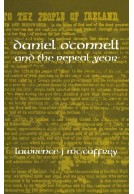Google Books previews are unavailable because you have chosen to turn off third party cookies for enhanced content. Visit our cookies page to review your cookie settings.
Inflections Of The Pen (Hardback)
Dash and Voice in Emily Dickinson
Imprint: University Press of Kentucky
Pages: 224
Illustrations: 5 illustrations
ISBN: 9780813119885
Published: 12th December 1996
Script Academic & Professional
Pages: 224
Illustrations: 5 illustrations
ISBN: 9780813119885
Published: 12th December 1996
Script Academic & Professional
This book will be reprinted and your order will be released in due course.
You'll be £23.00 closer to your next £10.00 credit when you purchase Inflections Of The Pen. What's this?
+£4.99 UK Delivery or free UK delivery if order is over £40
(click here for international delivery rates)
Order within the next 7 hours, 7 minutes to get your order processed the next working day!
Need a currency converter? Check XE.com for live rates
(click here for international delivery rates)
Order within the next 7 hours, 7 minutes to get your order processed the next working day!
Need a currency converter? Check XE.com for live rates
Emily Dickinson's life and art have fascinated -- and perplexed -- the poet's admirers for more than a century. One of the most hotly debated elements of Dickinson's poetry has been her unconventional use of punctuation. Now, in Inflections of the Pen, Paul Crumbley unravels many of these stylistic mysteries in his careful examination of manuscript versions of her poems -- including selections from the fascicles, Dickinson's own hand-bound gatherings of her poems -- and of Dickinson's letters. Crumbley argues that the dash is the key to deciphering the poet's complex experiments with poetic voice.
From the time of Dickinson's first editors, Mabel Loomis Todd and Thomas Wentworth Higginson, standard versions of her poetry have tended to normalize the poems. Designated as either em- or en-dashes in print by all but a few recent editors, Dickinson's dash marks in the holography versions vary tremendously in length, height, and angle. According to Crumbley, these varied dashes suggest subtle gradations of inflection and syntactic disjunction. The printed poems give the impression of a unified voice, whereas the dashes that appear in the manuscripts disrupt conventional thought patterns and suggest multiple voices.
The dash, therefore, becomes Dickinson's most expressive visual signal. Crumbley believes that Dickinson's unorthodox practice grants her readers the right to question linguistic authority. No one voice seems to have primacy in Dickinson's poetry. Instead, the poems provoke multiple readings that simultaneously affirm and challenge the dominant social and political values of nineteenth-century America.
Other titles in University Press of Kentucky...















